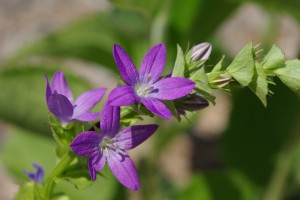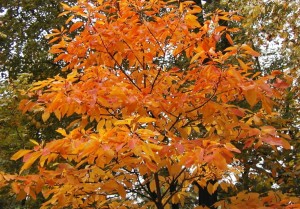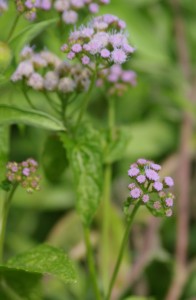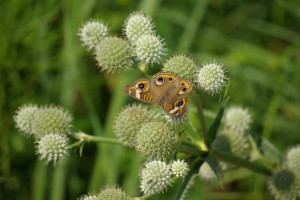Plant Names Offer Clues to Past Uses and Beliefs
The names of many of our bluff lands plants offer their own archeological record of cultural pasts. Rather than rock hammers, small brushes, transects, and sieves, the archeology of words needs a tool kit that begins with a dictionary. Nouns – names of things – can tell as much about the namers as what they were naming.
Taxonomy, the science of naming things, has been regularized over the last three centuries within the system first devised by the Swedish scientist Carl Linnaeus in the mid-18th century. This binomial system, with genus followed by species name, is based on relationships between organisms.
But other classifications have been equally useful to those schooled within those traditions. In many cases a look at older, now only rarely used common names and groupings hint at the important roles assigned to certain plants.
Excepting annual pilgrimages to favorite mushroom hunting areas, blackberry tangles, and pawpaw and persimmon groves, we rarely gather wild foods, and, largely, only do so in a holiday feasting mode. Earlier residents of our lands drew far more widely from a natural larder.
Corn salad (Valerianella radiata), a common, often weedy-looking plant of disturbed areas and farm field edges, tossed together with a seasoning of leaves from Poor-Man’s-Pepper (Lepidium virginicum), would bring a delightful taste of fresh green and add tang to an early spring meal.
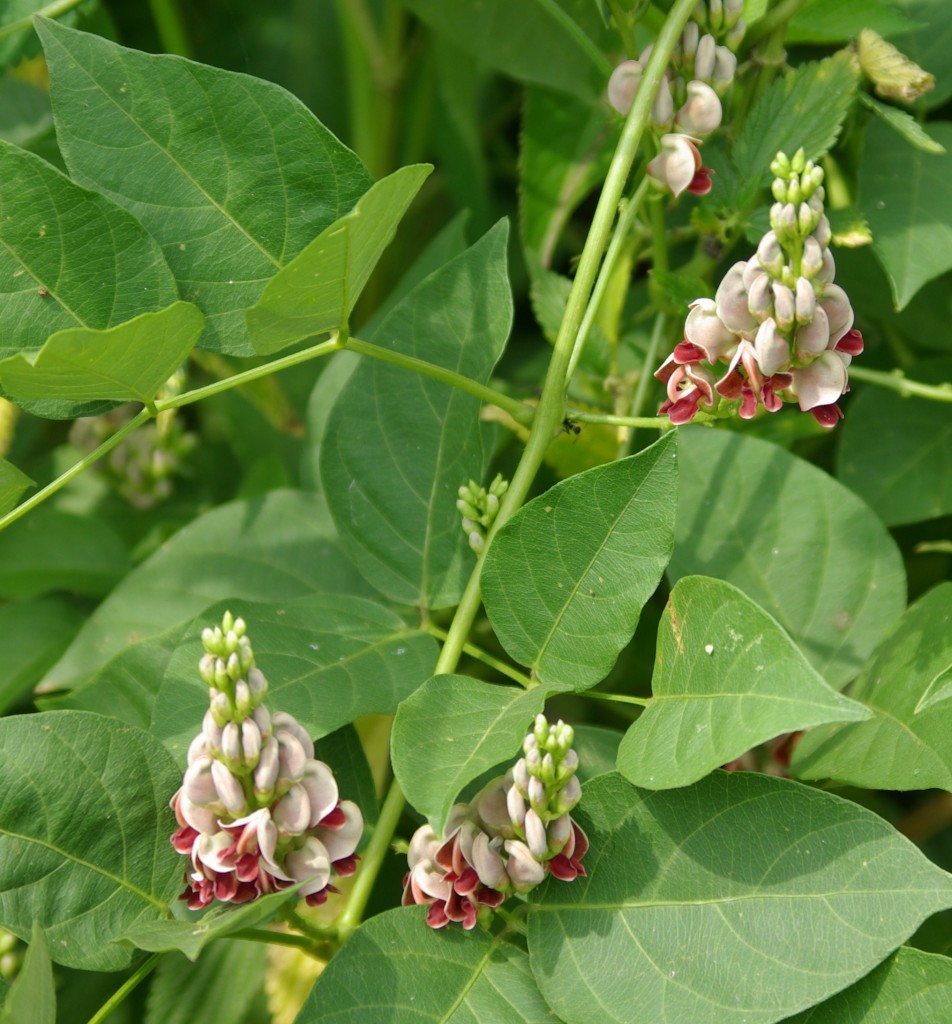
Pen DauBach, Clifftop. More than beautiful fragrant flowers, groundnut also once was valued as a food source.
The salad, however, could have accompanied and complemented tubers gathered in fall and stored carefully through winter. Jerusalem artichokes (Helianthus tuberosa), wild potato vine (Ipomoea pandurata) and Groundnut (Apios americana) all provided much needed starchy foods. Groundnut, a member of the Pea family, also provided edible seeds. This late summer-blooming vine with highly fragrant flowers now occasionally is grown as an ornamental plant, but was a staple food for both Native Americans and European colonists and settlers throughout the Eastern U.S.
Those who over indulged at table had a sure cure ready at hand. Cherokees used a liquid brewed with roots from Venus’ Looking Glass (Triodanus perfoliata) as the specific remedy for overeating and its discomforts. Early European settlers, with their own traditions of gathering plants for varieties of uses, often transferred old country uses and names for similar looking and sometimes related, varieties. Our native columbine (Aquilegia canadensis), used by Native Americans and early settlers alike as a medicinal, was called culverwort by Europeans in continuation of their use of European columbines (A. vulgaris).
The addition of “wort” to plant names is a clue to use as this Anglo-Saxon word often was appended to plants believed to have medicinal value. “Physic,” with its Latin roots referring to knowledge of nature, also flags a plant’s name with medical use. So, we have spiderworts (Tradescantia sp.), milkworts (Polygala sp.), bellworts (Uvularia sp.) and Indian Physic (Porteranthus stipulatus), denoting plants once believed to have wide medicinal applications. But, perhaps due to continuing belief in magical contagion, wort also was applied to plants believed to cause a particular condition, as Wood Betony (Pedicularis canadensis) was labeled “lousewort” for the conviction that sheep and cattle would catch lice while grazing near this plant. Just as with columbines, this European belief and name were transferred to our native wood betony, and, in both cases the beliefs in parasite contagion were unfounded.
Similar name clues arise from the addition of “bane” to a plant’s name. This word, derived from German, initially meant “poison,” and in later and still-current use refers to anything that may cause distress or discomfort. Use of “baneful” plants, however, depended upon what would be made uncomfortable. So, people would keep cows away from cowbane (Oxypolis rigidior), a white-flowered member of the carrot family that grows in moist soils, and which, indeed, is poisonous to cattle. But, daisy fleabane (Erigeron strigosus), was gathered, dried, and both hung in doorways and added to mattress stuffings in the belief that it would ward off fleas. Occasionally, two common names given to the same plant create confusion, as is the case with ‘baneberry” (Actea pachypoda), more commonly known as Doll’s Eyes. While the berries certainly live up to their name – for they are poisonous to humans — both Native Americans and early European settlers used portions of the plant and roots as medicines. The more common name refers to the resemblance of the fruits to the porcelain “eyes” used for children’s toys, and does not refer to actual use.
Yet another word clue is found when plant names include “ague,” a word derived from the Old French term for “acute.” Ague was a general term inclusive of any feverish illness, such as flu or a cold, and included the variety of fever and chills they called Tertian Fever, which we now recognize as malaria. Our bluff lands are home to two small trees once believed to contain cures for feverish illness.
Sassafras (Sassafras albidum) commonly grow along forest edges, and during the
autumn often are among the most exuberantly colorful trees. Once known as “aguetree” sassafras was thought to be a cure and panacea for all ills. In 1574, the “physician of Seville,” Nicholas Monardes published his Joyfull Newes Out of the Newe Founde Worlde (as his translator spelled it), and trumpeted to all that Spanish explorers had learned the incredible curative properties of sassafras from New World “Indians.” Extracts from this plant, particularly the roots, Monardes wrote, would cure any and all fevers, remedy troubles with the liver or stomach, even cause the lame and crippled to be able move about again.
Though more shrub than tree, Hoptree (Ptelea trifoliata), also called Wafer Ash, had similar tall hopes placed on it. A distillation from the roots of “Aguebark,” as this tree also was known, had “tonic, antiperiodic, and stomachic properties…employed in dyspepsia and debility and also febrile diseases…and was a non-irritating bitter tonic…also useful in chronic rheumatism,” as Mrs. M. Grieve wrote in her masterful compilation of A Modern Herbal.
Early settlers had yet another choice to help fight off the agues if a brew made of sassafras or hoptree was unavailable or hadn’t worked. Mrs. Grieve noted that Native Americans called it the equivalent of “agueweed,” but European settlers called it “thoroughwort,” and all regarded it as a thoroughly healing plant. Several bonesets (Eupatorium sp.) grow in our area, including the tall white-flowering Common Boneset (E. perfoliatium) and the late-summer blooming Blue Boneset (E. coelestinum), which also is known as Mist Flower and Wild Ageratum. Early settlers, when wracked by a cold, flu, or illness so severe and so aching that they called it “breakbone fever,” trusted in boneset remedies to cure them and put them right again.
Another member of the Eupatorium family (E. rugosum), commonly known as White Snakeroot, though also used sparingly as a tonic, was – and is – capable of causing fatal illness. A common plant in our area woodlands, White Snakeroot causes milk fever, a sickness dreaded by early European settlers. Cattle that eat significant quantities of the plant develop “trembles;” and grazing the plant causes milking cows to secrete a toxin into their milk. Those who then drank the cow’s milk suffered a terrible and painful illness often resulting in death. Abraham Lincoln’s biographer Carl Sandburg noted that Lincoln’s mother was reportedly the third victim of milk fever in the family’s Kentucky settlement in 1818.
White snakeroot is one of a group of plants with “snake” in the name. This grouping, which takes in multiple species and genera of plants across plant family types, referred in the past to belief that the plants’ roots offered cures for snakebite. Native Americans across the continent used more than 75 different species of plants for treatment of snakebite, as Daniel Moerman catalogued in his 1998 book Native American Ethnobotony. In our area we can find Sampson’s Snakeroot (Orbexilum pedunculatum) and Seneca Snakeroot (Polygala senega) growing in open woodlands and glades. On our prairies we find Rattlesnake Master (Eryngium yuccifolium), a curious-looking plant that looks as though it would be more at home in a desert. In all these cases the plants’ reputed curative properties for snakebite – just as the curative properties for nearly all folk remedies – were based far more on hope than fact.
Earlier residents of our lands named things out of regard to usefulness. The names remind us and hint at their stories, struggles, and hopes.
Clifftop, a local nonprofit organization, is focused on preserving and protecting area bluff lands.
A version of this article appeared in the November 6 2009 edition of the Monroe County Independent.
© 2009 all content rights reserved, Clifftop NFP.
Comments are currently closed.

